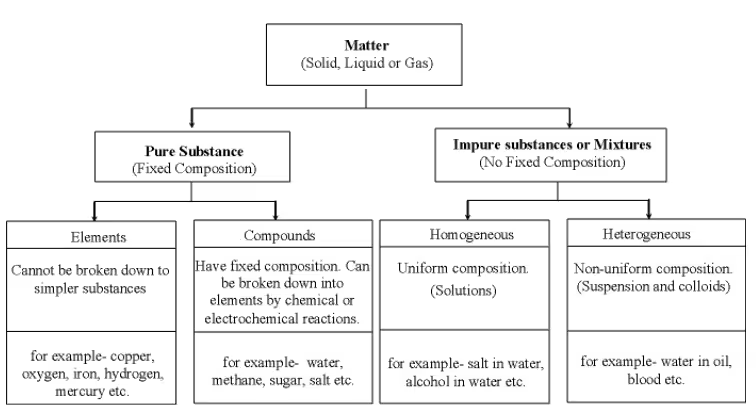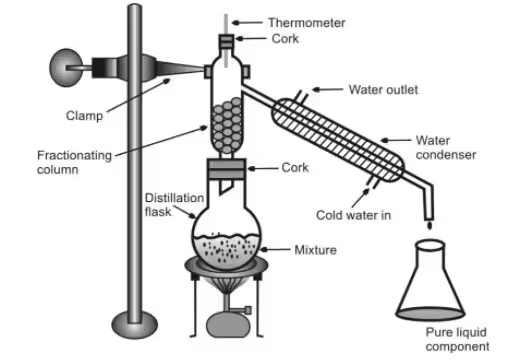
To Download PDF
Please verify your Whatsapp number first,
so you can download this pdf immediately

 Send OTP
Send OTP.avif)
You're going to love this. Is Matter Around Us Pure? is honestly one of the easiest and most scoring chapters in your Class 9 Science syllabus! And guess what?
We’ve got you covered with detailed, to-the-point notes that include everything you need. No fluff, no extra confusion, just the stuff that really matters. Whether it’s about pure substances, mixtures, solutions, or separation techniques, we’ve explained it all in the simplest way possible.
We know how stressful it can be to look for the right notes before exams, so here’s your perfect one-stop solution. These notes are fully based on the NCERT curriculum and written just the way your board expects.
So you can stop worrying about making your own notes, we’ve done the hard part for you. All you have to do is go through them and revise. Your science prep just got a whole lot easier!
This chapter helps us understand what we’re really surrounded by, pure substances or mixtures. A pure substance has only one type of particle and fixed properties, like water or oxygen. Most things around us, though, are mixtures.
Some are homogeneous (evenly mixed like salt water), and others are heterogeneous (like sand in water). We learn about solutions, suspensions, and colloids. Each with unique properties like particle size, appearance, and how they scatter light.
The chapter also dives into cool methods to separate mixtures like filtration, evaporation, chromatography, distillation, and crystallization, stuff we actually see in real life! Lastly, we explore elements (metals, non-metals, metalloids) and compounds and understand how they differ from mixtures.
All matter around us can be categorized as either pure substances or mixtures.
A pure substance contains only one kind of particle and has a uniform and definite composition.
For example, water, salt, and oxygen are pure substances. They have consistent properties throughout and cannot be separated into other substances by physical methods.
A mixture is made up of two or more substances physically combined, where each substance retains its own properties. Mixtures can be separated using physical methods like filtration, evaporation, and distillation. For example, air, soil, and lemonade are mixtures.
Mixtures can be homogeneous or heterogeneous.
A homogeneous mixture has a uniform composition throughout, and its components are not visibly distinguishable. An example is sugar dissolved in water. You cannot see the sugar separately, and the taste remains the same throughout.
A heterogeneous mixture has a non-uniform composition, and its components are visibly different. For instance, a mixture of sand and iron filings or oil and water are heterogeneous, as the different substances can be seen and separated easily.

A solution is a homogeneous mixture of two or more substances. It consists of a solute (the substance that is dissolved) and a solvent (the substance in which solute is dissolved). Solutions can exist in all states of matter–solid (alloys like brass), liquid (salt solution, lemonade), and gas (air, soda water).
Make your study plan easier and check the latest syllabus outline.
The amount of solute present in a given amount of solution or solvent. It can be expressed as:
Based on concentration, a solution can be dilute, concentrated, saturated, or unsaturated.
A suspension is a heterogeneous mixture in which the solute particles do not dissolve but remain suspended throughout the bulk of the medium. These particles are visible to the naked eye and may settle down over time if the mixture is left undisturbed. For example, a mixture of chalk powder in water is a suspension.
Since most substances in nature are mixtures, various methods are used to separate their components.

A pure substance can either be an element or a compound.
An element is a substance that contains only one kind of atom. It cannot be broken down into simpler substances by any chemical means.
Elements can be classified into the following types:
It is a substance formed by the chemical combination of two or more elements in a fixed ratio. It can be broken down by chemical methods. For example: water (H₂O), carbon dioxide (CO₂) and sodium chloride (NaCl).
Here’s a quick way to understand the difference between mixtures and compounds.
Now that you’ve gone through our detailed and simplified notes for this chapter, we hope you’re feeling way more confident about this chapter! We’ve packed everything important into one easy-to-follow guide. No more flipping through textbooks or stressing about last-minute revisions. With this all-in-one package, your preparation is sorted!
Just revise these notes a couple of times, and you’ll be ready to ace any question from this chapter. Remember, we’re here to make your learning smooth and stress-free because smart studying is better than hard studying. Stay consistent, and science will feel like a breeze!
Q1. What do we mean by a pure substance?
Ans. A pure substance is made up of only one kind of particle, like gold, water, or oxygen, with fixed properties.
Q2. What is the difference between a mixture and a pure substance?
Ans. A pure substance has only one kind of particle, while a mixture has two or more substances physically combined, like salt water.
Q3. What are homogeneous and heterogeneous mixtures?
Ans. Homogeneous mixtures look uniform throughout (like sugar in water), while heterogeneous mixtures have visible parts (like sand in water).
Q4. How can mixtures be separated?
Ans. Mixtures can be separated using methods like filtration, evaporation, chromatography, distillation, or separating funnel, depending on the substances.
Q5. What are elements and compounds?
Ans. Elements are pure substances made of one type of atom (like iron). Compounds are made of two or more elements chemically combined (like water).